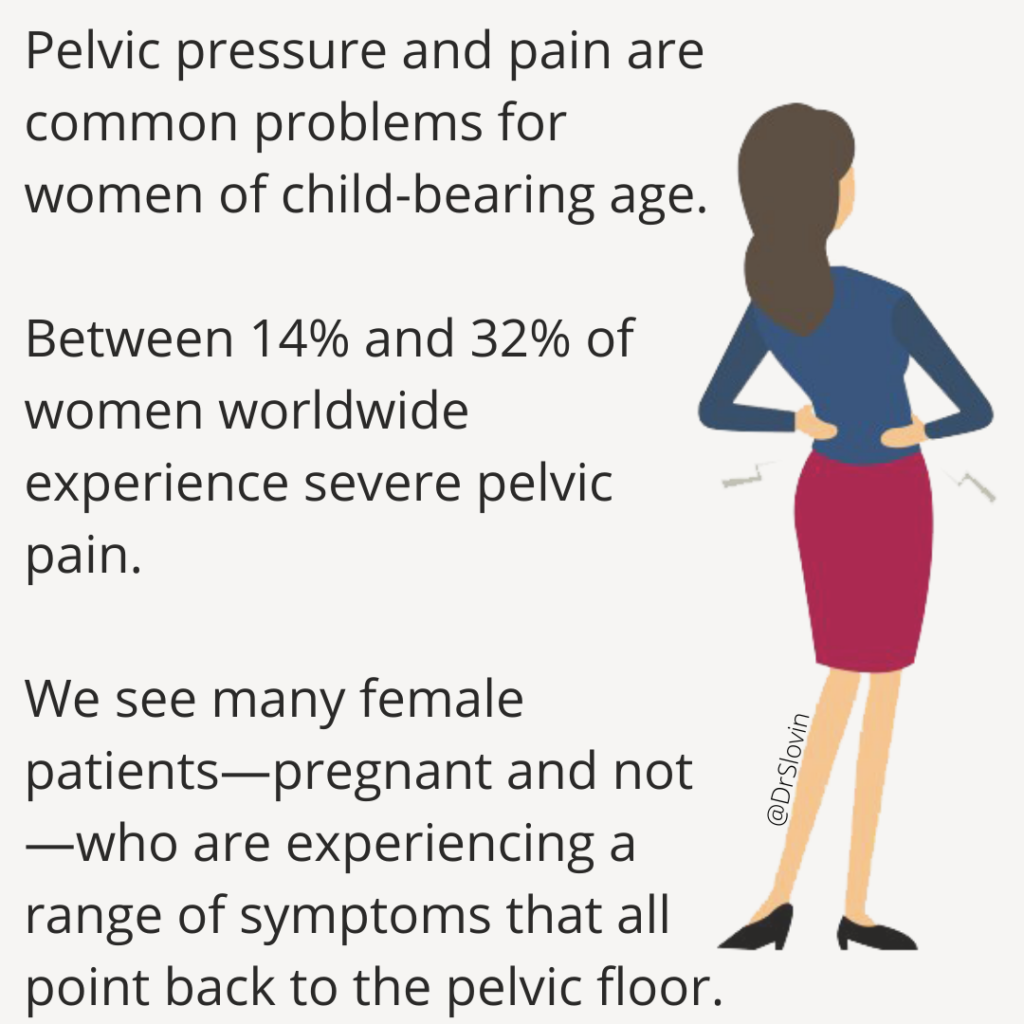Can a Chiropractor Help with Pelvic Pain in Women?

Can a Chiropractor Help with Pelvic Pain in Women?
Sometimes, it feels like there’s a sharp boulder nudging up against the walls of your pelvis and uterine area. Other times, it’s more like a dull pressure that weighs you down. It’s hard to sit, impossible to poop, and there’s a constant disruption to life with insufferable lower abdominal pain.
Pelvic pressure and pain are common problems for women of child-bearing age. Between 14% and 32% of women worldwide experience severe pelvic pain. At Slovin Chiropractic Center, we see many female patients—pregnant and not—who are experiencing a range of symptoms that all point back to the pelvic floor.
Pelvic Pain Conditions and Symptoms
The nerves in and around the pelvis are responsible for lower abdominal and reproductive organs. When the pelvis isn’t centered, you’ll likely experience symptoms such as:
- Lower abdominal or uterine pain
- Constipation
- Urinary problems (pain or difficulty initiating a stream)
- Troubles with reproductive function
- Significant PMS issues
- Problems sitting, standing, and running
- Pain with intercourse
- Numbness and/or tingling down the leg and sometimes into the foot
Chronic pelvic pain is often caused by conditions like:
- Pelvic inflammatory disease
- Fibroids
- Endometriosis
- Irritable bowel syndrome
- Musculoskeletal problems
- Pelvic congestion (issues with the veins)
- Painful bladder syndrome
- Ovarian remnant (tissue left over after one or both ovaries are removed)
How can a chiropractor help with these issues when there’s nothing mentioned about the back? A common myth about chiropractors is that we only treat conditions of the spine. That’s not true. The spine is the primary organ of our specialty, so we spend a lot of time there; however, we treat painful conditions anywhere in the body by focusing on the system for movement—the musculoskeletal system.
Our primary form of treatment is the spinal adjustment.

Spinal Adjustment for Lower Abdominal Pain
What exactly is a spinal adjustment? An adjustment is precise and targeted explicitly to the origin of the problem.
A Gonstead adjustment uses diagnostic studies and a physical examination to look at the spinal range of motion, posture, and gait. Further, a chiropractor palpates (feels, taps on) the length of the spine, listening and looking for abnormalities like lumps, bumps, buzzing, beating, and burbling sounds. This will tell us where the problem is so we can target your treatment more effectively.
What Comes After Spinal Adjustment?
It’s time to strengthen the pelvic floor, but you don’t want to jump right into it after the adjustment. As a general rule, you’ll want to avoid strenuous exercise for at least 24 hours after an adjustment. Ask your doctor about any other activity limitations to consider. Restrictions will vary from person to person, so it’s best to check before undergoing an adjustment.
More than likely, you won’t need many restrictions, and you’ll feel the improvement in your lower abdominal pain relatively quickly. The number of treatments will depend on the severity of your condition, your commitment to self-care, and your body’s natural chemical makeup. In addition to pain relief, you’ll likely notice improvements in your:
· Digestion
· Urination
· Reproductive function
· Sexual drive
· Energy
Your spine is the most important organ in your body if you want to feel at your best and move freely through life without pain or disruption. It’s essential to take care of this organ in and out of the office. At Slovin Chiropractic Center in Norwalk, we’ve helped hundreds of women overcome pelvic pain and floor dysfunction. Leading people back to a life in motion is our sole priority at the clinic. If you’re ready to get rid of the pain for good, it’s time to schedule an appointment.
Sources:
Gonstead Clinical Studies Society: The Gondstead Adjustment
NICHD-NIH: How many women have pelvic pain
Mayo Clinic: Symptoms and causes of pelvic pain.
